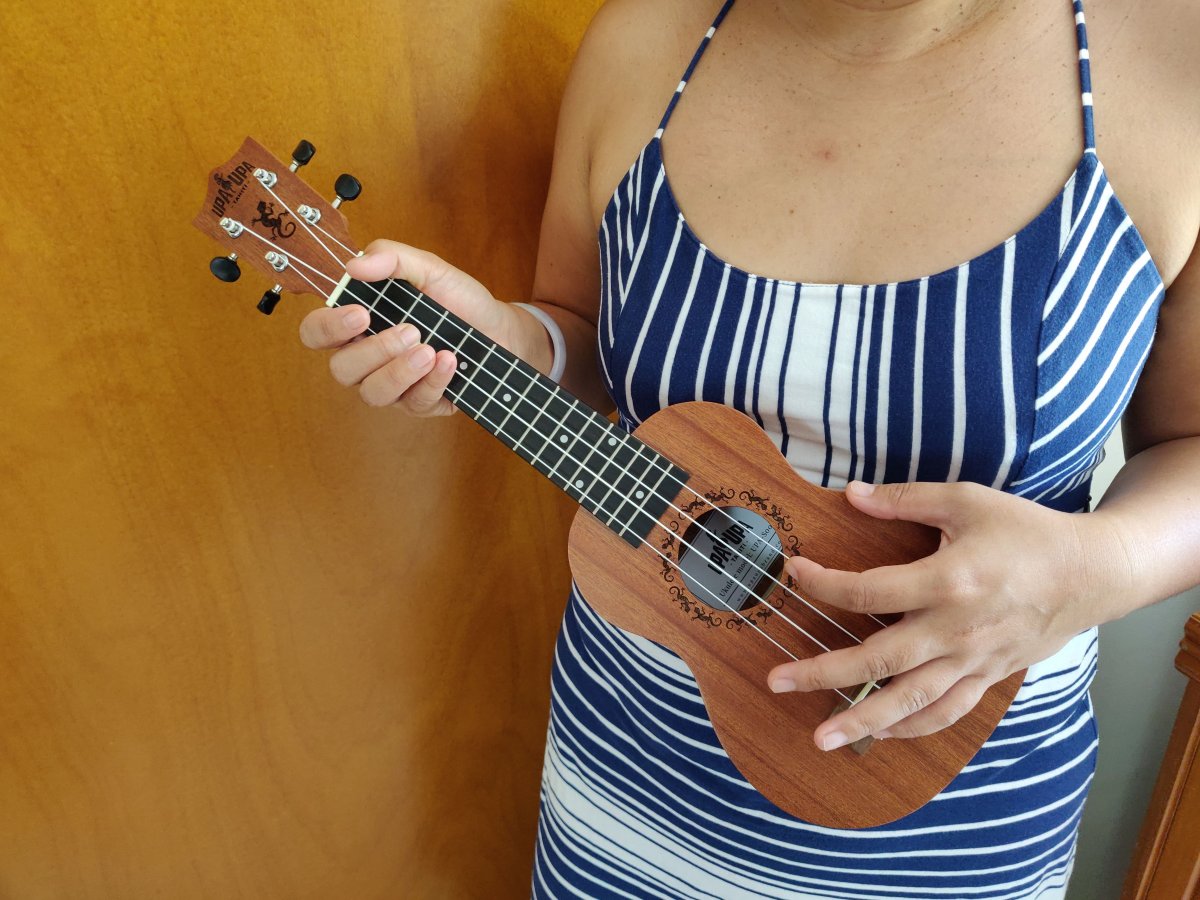
Introduction
The ukulele is a versatile and easy-to-learn instrument, even for left-handers. If you're left-handed and want to learn to play the ukulele, don't worry! This article is specially designed for you and will guide you through each step of mastering this fascinating instrument.
Choosing the Right Ukulele
First, it's important to choose the right ukulele for you. There are specific left-handed models, but you can also opt for a standard ukulele and simply adapt it to your needs. Here are some points to consider:
- Size allowed: Ukuleles come in different sizes (soprano, concert, tenor, and baritone). As a beginner, it is recommended to choose a soprano or concert ukulele, as they are easier to handle. Tenor and baritone ukuleles may offer a richer and deeper sound, but they are also larger and may be more difficult for beginners to play.
- Brands: Do some research and check reviews to find a brand that offers quality left-handed instruments. Some brands known for their good quality ukuleles include, besides Upa Upa, Kala, Lanikai, Cordoba and Fender. Feel free to try different ukuleles in store to find the one that suits you best.
- Strings: Be sure to purchase strings that are specifically designed for left-handers or adaptable to both hands. Left-handed strings are usually made of nylon or fluorocarbon and can be purchased online or at music stores. It is also recommended that you regularly change the strings of your ukulele to maintain optimal sound.
- Budget: Determine how much you are willing to spend on your ukulele. Beginner instruments can be found at affordable prices, while higher quality ukuleles can cost several hundred dollars. Don't forget to factor in the cost of accessories such as strings, a case, and a tuner.
Tune your ukulele
Before you start playing, it is essential to tune your instrument correctly. Left-handed people should tune their ukulele differently than right-handed people. Here is the order of the strings for a left-handed ukulele: Sol (G), Do (C), Mi (E), La (A), going from the string closest to your head to the one closest to your foot .
To tune your ukulele, you can use an electronic tuner, a smartphone app, or a tuning fork. Be sure to check the tuning regularly, as ukulele strings tend to go out of tune quickly, especially if they're new.
hold the ukulele
As a left-handed person, you should hold the ukulele so that the neck points to the right. Place the ukulele against your chest, so that most of the instrument rests on your left arm. Use your left hand to hold the ukulele in place and your right hand to pluck the strings.
Here are some additional tips for holding your ukulele correctly:
- Left arm position: Keep your left arm slightly bent and relaxed to make it easier to grip the handle. You can use the crook of your elbow to support the back of the ukulele. For better control and stability, try supporting the ukulele with your forearm and chest, keeping it tilted slightly towards you.
- Right hand position: Place your right hand near the bridge (the part where the strings are attached) for a clearer, brighter sound. If you want a softer sound, bring your hand closer to the rosette (the circular hole in the center of the ukulele's body). When playing, try to maintain a 45 degree angle between your right hand and the strings, and use a smooth sweeping motion to pluck the strings.
- Stance: Be sure to maintain an upright and relaxed posture when playing. Avoid leaning or stooping, as this can cause strain and make playing the ukulele more difficult. You can also try playing seated or standing, depending on what works best for you.
Learn basic chords
Chords are the foundation of ukulele music. As a left-hander, you need to learn reverse chords. Here are some basic chords to master, along with tips to make learning them easier:
- C chord (C): Place your left ring finger on the 3rd fret of the A string (A). To make positioning your fingers easier, be sure to place them just behind the fret, not touching the fret itself.
- G chord (G): Place your left middle finger on the 2nd fret of the A string (A), your ring finger on the 3rd fret of the E string (E) and your index finger on the 2nd fret of the G string (G). Try to keep your fingers arched to avoid touching the other strings.
- A minor (Am) chord: Place your left middle finger on the 2nd fret of the G (G) string. To quickly switch from the C chord to the A minor chord, simply move your ring finger from the A string to the G string.
- F chord (F): Place your left middle finger on the 2nd fret of the G (G) string and your index finger on the 1st fret of the E (E) string. As with the G chord, try to keep your fingers arched to avoid touching the other strings.
To help you memorize these chords, practice them regularly and try to visualize their placement on the neck of the ukulele.
Transition between chords
Once you are comfortable with the basic chords, it is important to work on the fluidity of your transitions between chords. Slowly practice chord changes, concentrating on the accuracy and speed of your fingers. Here are some tips for making transitions between chords easier:
Anticipate the next chord: When playing, try to visualize the next chord in advance to prepare yourself to move your fingers quickly and smoothly.
- Minimize movement: Try to keep finger movements to a minimum when transitioning between chords. The more efficient your movements, the faster and smoother the transitions.
- Practice with a metronome: Use a metronome to work on your timing and rhythm when changing chords. Start slow, then gradually increase the speed as you feel more comfortable.
Learn strumming techniques
Strumming is the technique of strumming the strings to produce a sound. For lefties, the right hand is used to strum the strings. Here are some basic techniques to get started, along with tips for mastering them:
- The downstrum: Sweep the strings up and down with your thumb, index finger, or a pick. Try not to use too much force and keep your hand relaxed to avoid creating an overly aggressive sound. Practice the downstrum on different chords to get used to the feel.
- The upstrum: Sweep the strings up and down with your thumb, forefinger, or a pick. When practicing the upstrum, be careful not to snag the strings. You can tilt your hand slightly to facilitate the movement.
- Alternate strumming: Alternate between downstrums and upstrums to create a steady beat. To get comfortable with alternating strumming, start slowly and gradually increase the speed as you gain confidence.
- The rhythms: Experiment with different strumming rhythms to add variety to your playing. For example, you can try strumming patterns such as "D-DU-UDU" (Down-Down Up-Up Down Up) or "D-DU-U -DU" (Down-Down Up-Up Down Up).
Play simple songs
Once you've mastered basic chords and strumming techniques, you can start playing simple tunes. Look for easy ukulele songs that use the chords you've learned and practice them regularly. Don't be afraid to look for left-handed-specific tutorials online to help you out.
Here are some popular songs that are great for beginners:
- "Somewhere Over the Rainbow" by Judy Garland
- "I'm Yours" by Jason Mraz
- "Riptide" by Vance Joy
- "Hallelujah" by Leonard Cohen
- "Stand by Me" by Ben E. King
Learning to play simple tunes will not only help you improve your chord and strumming skills, but also boost your confidence as a musician.
Tips for learning songs
When learning new songs, keep these tips in mind to help your progress:
- Break down the song: Break the song into smaller sections, such as verses, choruses, and bridges, and work on each section individually before combining them.
- Take your time : Learn slowly and be patient with yourself. Gradually increase the speed as you feel more comfortable with the song.
- Sing while playing: If you're comfortable with singing, try singing while playing the ukulele to develop your coordination and musicality.
keep progressing
The ukulele is an accessible instrument, but it also offers many possibilities for evolution. To keep progressing, explore new chords, strumming techniques, picking, and other playing styles. Join left-handed groups or online forums to share tips, resources, and experiences.
Here are some suggestions for developing your ukulele skills:
- Learn new chords and progress to more complex chords, such as barre chords.
- Master different picking techniques, such as fingerpicking or flatpicking.
- Explore other musical genres, such as jazz, blues or Tahitian music.
- Take part in workshops, courses or ukulele meetings to exchange with other musicians and receive personalized advice.
Conclusion
Learning to play the ukulele as a left-handed person can be a rewarding and fun experience. By following this in-depth guide and practicing regularly, you will quickly develop the skills needed to play this charming instrument. Remember that the key to mastering the ukulele, or any other instrument, is patience, perseverance and, above all, fun.
As you continue to progress, feel free to explore new musical genres, attend ukulele meetups, or join online groups to share and learn with other left-handed musicians. The important thing is to stay engaged and enjoy every step of your musical journey.
So grab your ukulele, tune it, and embark on the musical adventure that awaits you. Good luck and happy strumming!
